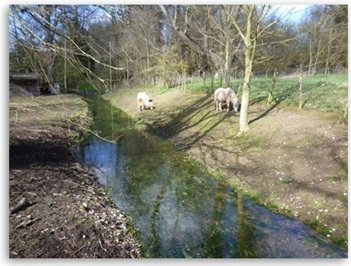Connecticut's Coastal Nonpoint Source
Pollution Control Program
Wetlands, Riparian Areas
& Vegetated Treatment Systems
Wetlands, riparian areas, and vegetated treatment systems are effective in removing pollutants from stormwater, including sediment, nitrogen, and phosphorus. Wetland and riparian areas also help to slow the flows from higher-than-average storm events, protecting downstream areas from impacts such as channel scour, stream bank erosion, and fluctuations in temperature. Changes in their physical, chemical or biological characteristics may impair the ability of a wetland or riparian area to filter excess sediments and nutrients, causing deterioration of surface water quality. Activities that cause such changes include draining of wetlands for cropland, overgrazing, construction, channelization of adjoining waterways (see hydromodifications), deposition of dredged material and excavation.
Key Concepts
- Maintain the ability of wetlands and riparian areas to filter nonpoint source contaminants such as phosphorus and nitrogen.
- Prevent or reduce pollutant loadings to wetlands and riparian areas.
- Restore degraded and preexisting wetland and riparian areas.
- Use vegetated filter strips to reduce the amount of sediment and other pollutants entering adjacent waterbodies.
Content Last Updated February 28, 2020

